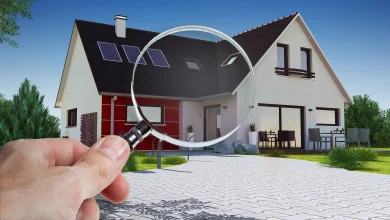Regular maintenance is crucial when owning a car to ensure optimal performance and safety. One aspect that should always be addressed is the maintenance of car tires. Often, car owners notice a decrease in tire pressure over time. Over time, however, tires may lose pressure due to various reasons. Here’s a breakdown of why it happens and how to maintain them.
Tire Pressure Reasons
Temperature Fluctuations
Temperature plays a significant role in tire pressure variation. When the temperature drops, air molecules inside the tire compress, causing the tire pressure to drop. For every 10°F decrease in temperature, tire pressure can drop by about 1 PSI (pound per square inch). Conversely, as the temperature rises, air molecules expand, increasing the tire pressure. Therefore, the change of seasons or a sudden shift in the weather can cause fluctuations in tire pressure.
Air Permeation
All tires naturally lose air over time due to the process of permeation. It is when small amounts of air escape through the tire’s rubber compound. While this is a slow process, it can cause tires to lose 1-2 PSI per month. This natural process makes it important for car owners to regularly check and adjust their tire pressures, even if there are no obvious punctures.
Valve Stem Issues
The valve stem is where the air is added or removed from the tire. If it is damaged, worn out, or not seated correctly, it can cause air to leak. Over time, dirt and debris can also accumulate on the valve stem, causing it to malfunction. A faulty valve stem is the culprit if you frequently need to refill your tires.
Punctures
One of the most common reasons for a loss in tire pressure is punctures. It can happen when sharp objects like nails, glass, or metal pieces penetrate the tire. Sometimes, the thing remains lodged in the tire, creating a slow leak. The object might sometimes fall out, leaving a small hole. These punctures might only sometimes be evident initially, especially if the leak is slow.
Bead Leaks
The bead of a tire is where the rubber meets the wheel’s rim. Due to corrosion or damage to the rim, or if the tire isn’t seated properly on the rim, air can escape from this area. It is termed a bead leak. Driving on challenging terrains or potholes can exacerbate this problem by damaging the tire bead or rim.
Wheel Damage
A damaged wheel can also be a reason for decreased tire pressure. If the wheel has dents or cracks, it may not provide a perfect seal, allowing air to escape. Often, driving through potholes or over rough terrains can cause such wheel damage.
Age of the Tire
As tires age, their structural integrity decreases. The rubber might dry out and develop cracks, especially if the tires are exposed to harsh conditions or chemicals. As the tire ages, its permeability can also increase, leading to faster air loss.
Compound Breakdown
Tires are made using various compounds and materials. Over time, and especially under harsh environmental conditions, these compounds can break down, leading to air loss. Exposure to extreme heat, for example, can deteriorate the tire’s inner lining, making it more porous.
Overloading the Vehicle
Every tire has a maximum load capacity, which, when exceeded, can strain the tire and lead to a decrease in pressure. Overloading the vehicle stresses the tires, making them more susceptible to air loss and even potential blowouts.
How to Recover Them
- Check your tire pressure at least once a month using a good-quality tire pressure gauge. Check when the tires are cold, preferably after the car has been stationary for a few hours.
- Instead of regular air, consider filling your tires with nitrogen. Nitrogen molecules are more prominent than oxygen molecules, reducing the pressure loss rate.
- Regularly inspect your tires for any symptoms of punctures, such as embedded nails or screws. If you spot any, get them repaired at a professional tire shop.
- Ensure that your 22 inch wheels and tire’s valve caps are on tight, and replace any missing caps. If you notice a faulty valve, replace it.
- Inspect wheels for damage and get them repaired if you notice cracks or deformations.
- Park your vehicle in a garage during extreme cold to reduce the impact of temperature fluctuations.
- Tires have a lifespan. Regardless of tread depth, consider replacing them if they’re old and consistently losing pressure.
- For emergencies or slow leaks, you can use tire sealants. However, they are a temporary solution; you should seek professional repair immediately.
- Always maintain the tire pressure recommended by the vehicle manufacturer. You can find these details in your vehicle’s owner’s manual.
Conclusion
The loss of tire pressure can adversely affect the vehicle’s performance, fuel efficiency, and safety. Recognizing the various reasons that contribute to this can help car owners maintain their tires more effectively. Regularly checking tire pressure and inspecting tires for visible damage or wear are essential preventative measures. Being proactive in tire recovery not only extends the lifespan of the tires but also ensures a safer and more efficient driving experience. Being informed and attentive can make all the difference, whether it’s the natural permeation of air, temperature-induced fluctuations, or mechanical issues like punctures and valve stem malfunctions.




